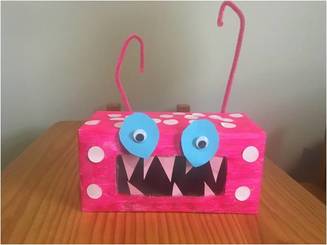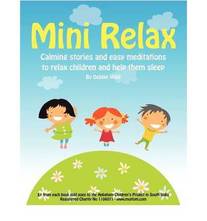|
by Melissa Bailey, Psychologist Anxiety is one of the most common childhood disorders. Most commonly a child will experience one of the following forms of anxiety:
Some of the ways anxiety may present in your anxious child:
The good news is that anxiety can be managed through therapy to learn how to decrease those worrying thoughts, but you as a parent or caregiver can also help your anxious child by teaching them to calm down and relax their bodies and minds. One technique that you can teach to your anxious child to help them relax is Progressive Muscle Relaxation (PMR). Often when we experience worrying thoughts and events our bodies will respond with muscle tension. This tension we feel can be uncomfortable making it difficult to relax and even go to sleep at night. PMR is the process of scrunching up different muscle groups for a few seconds and then releasing the tension. This is done in part so that we can identify the areas that we hold the most tension and also so that we can distinguish between tension and relaxation. Here are some basics you can try to help your child using Progressive Muscle Relaxation: Preparation:
What to say: "Take some deep calming breaths in through your nose and out through your mouth... Imagine your tummy is a big balloon and when you breathe in the big balloon is filling with air, and as you breathe out, the air is slowly escaping and the balloon becomes small again. Now...squeeze your toes and feet into a tight ball... hold this... (five seconds)... now relax...let them go loose. Tighten the muscles in your legs by pointing your toes...hold the muscles tight...(wait five seconds)... now let go and feel your legs go as loose as cooked spaghetti. Let's focus on your tummy now. Tense the muscles in your tummy by squeezing it in... hold this... (wait five seconds)...now relax...notice how good your body feels. Lift your shoulders as high as you can, bringing them up to your ears...hold this... (wait five seconds)...now relax....breathe in.... and breathe out... Next you can tense your arms and hands, by stretching them forward and tightening your hands into a tight ball, like you are squeezing a lemon...hold this... (wait five seconds)...now let your arms go floppy like cooked spaghetti...notice how relaxed they feel... Let's move to your face...tense your face by scrunching up your whole face...wrinkle it up as hard as you can...hold this... (wait five seconds)...now relax. Take another deep, calming breath in through your nose and out through your mouth... When you are ready, gently open your eyes and notice how good and calm your body feels." The following resources can further assist your child to relax using Progressive Muscle Relaxation:
Written by Dr Chaille Breuer, Clinical Psycholoigst Bedtime can be a time when children feel the relief of recharging their batteries for another day. It can also be a time when children are alone with their thoughts and their minds can feel really busy. Some children find themselves replaying the day that has just past, others think about what might happen tomorrow. For many, it can be a time when the darkness and noises outsides prompt their little minds to wonder about monsters and other scary things. Here are 5 simple and creative ways to manage worries at bedtime: 1. Feed worries to a worry monster Help young children to let go of their worries before they go to sleep by feeding them to a worry monster. You can create a friendly worry monster with your child by using an old tissue box. Paint or cover the tissue box with your child’s choice of colours and patterns and turn the opening into a mouth by adding some paper teeth. Once you’ve created the monster you can encourage your child to feed their written or drawn worries through its mouth (e.g., making friends at kinder, going swimming etc.). If your child struggles with writing or drawing, parents can help with the process. The monster likes to eat worries so your child can let them go from their mind. If the idea of a “friendly monster” might prompt some discomfort - you can choose your child’s favourite animal or character instead. 2. Teach your child to meditate Encourage children to learn how to relax their minds and body by teaching meditation skills at bedtime. There are many relaxation scripts written especially for children that encourage positive imagery, breathing and muscle relaxation techniques. Relaxation techniques can help calm busy minds and help get children ready for sleep. A helpful book to use is Mini Relax by Debbie Wildi (can be purchased from http://www.bookdepositry.com). Debbie’s book of calming stories helps children imagine themselves sliding on rainbows, walking through the fairy forest and see the world from a red air balloon. Each story introduces children to breathing and muscle relaxing techniques in a creative story format. Alternatively, you can google “child relaxation scripts” to source some free stories to read. You might even like to write your own! 3 Let worries fly away Teach older children to identify and let go of worrying thoughts with the help of balloons and a Sharpie (permanent marker). Encourage your child to blow up a balloon (you can help of course) and hold the end tight in one hand. Use a black or dark coloured Sharpie to write or draw the worry on the balloon. It could be a word or a sentence or a picture of whatever is on their mind. If your child has difficulty putting their worry into words you can help model what a worry might sound like in your head by writing your own worry. Using the phrase “what if…” can often help get your child started. Once your child has written or drawn the worry, tell your child to let it go and watch it fly around the room. When you retrieve the balloon your child will find that their written worry has shrunk and the writing is very tiny on the balloon – almost as if the worry is not so big anymore. 4 Change a scary image into a funny or silly one Help your child take control of a scary image in their head by teaching them to change what they see. Some children find that bedtime prompts them to think about the scary stories they have seen on TV, read in books or heard from other kids. Children might close their eyes and see an image in their head that is hard to shake (e.g., monster, ghost, zombie etc,). Encourage your child to draw what they see on a piece of paper. Children often find this hard to do as it asks them to face their fear directly. Once the image is drawn tell your child to change the image so they find it funny or silly. For example, one child kept picturing a zombie in her head when she closed her eyes at bedtime. Using the drawing technique she was able to turn the image into a zombie dancing gangnam style and she no longer found it so scary. With repetition, every time the zombie entered her head she thought about him doing gangnam style and it stopped keeping her awake. Read more on supporting your child through nighttime fears 5. Schedule worry time Help older children manage their worries at bedtime by encouraging them to schedule “worry time” into their day. Just like many adults, bedtime can be a time when the mind gets busy. Encourage your child to engage in a scheduled “worry time” earlier in the evening (instead of just before sleep). Your child can write down or say their worries at a scheduled time (e.g., just before dinner, after school or before the bedtime routine starts). Technology can be helpful here – your child can use a tablet or phone to record themselves (e.g., on apps like voice notes) saying their worries. Your child can then listen back to their spoken worries and then switch them off. Switching off a device is much easier than switching off a busy mind! Worries at bedtime are common for children. Teaching your child different ways of managing their worries can help them to relax as they go to sleep and teach important skills for self-regulation. If you are concerned about your child’s worries please seek professional advice. At Hopscotch and Harmony we have child psychologists who can help children and parents learn to manage worry. To book an appointment at our Werribee practice please contact us on 9741 5222. About the author:
Nighttime fears are common in young children and can result in frustrated and exhausted parents. Sound familiar? How can we help our children overcome their fears and to fall asleep peacefully?
Points to consider:
Now of course there has to be limits. Although a child suggesting that “you can stay with me until I fall asleep” or “I can sleep in your bed” may be acceptable for some families, if it is not appropriate for your family then you might gently say “hmm that’s a good idea but that won’t work for me because I have some things I need to do” or “that’s a good idea but that might be a bit squishy and I get pretty grumpy in the morning if I don’t get a good night’s sleep!”. Listen to your child’s ideas and build on them if you need to until you come up with a satisfactory solution that works for both of you. Validating the emotion and supporting children to come up with constructive solutions increases emotional intelligence. It helps them to regulate emotions and gives confidence that they have the power to make themselves feel better. If your child is having chronic sleep disturbances or the anxiety escalates and interferes with daily functioning then you might like to consider consulting with a child psychologist for assistance. It may not be too long before everyone is back to getting a good night’s sleep! |
Categories
All
|
Hopscotch & HarmonyAt Hopscotch & Harmony Psychology, you can expect compassionate care and evidence-based guidance on your journey to wellness.
With clinics in Werribee and Belmont, as well as providing online counselling to clients who live throughout Australia, our dedicated team of psychologists and dietitians are committed to providing support to children, teenagers and adults. With a focus on understanding your unique needs, we offer tailored solutions to foster growth and resilience. Trust in our experience and dedication as we work together towards your well-being. Welcome to a place where healing begins and possibilities abound. |
Our services |
Contact usHopscotch & Harmony
Child, Teen and Adult Psychology Our Locations:
WERRIBEE: 1/167-179 Shaws Rd
BELMONT: 92 Roslyn Rd AUSTRALIA-WIDE: Online counselling |
Hopscotch and Harmony respectfully recognise the Aboriginal and Torres Strait Islander people as the first Peoples of the continent now called Australia.
We acknowledge the Bunurong and Wadawurrung people of the Kulin Nation, the traditional owners of the land on which we work, and pay our respects to their Elders, past, present and emerging.
© 2024 Hopscotch and Harmony Pty Ltd











 RSS Feed
RSS Feed
